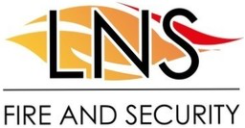All commercial buildings need to meet the building regulations for fire and safety. An essential fire and safety equipment that needs to be present in operational conditions in all business premises is fire extinguishers. However, you cannot just install any fire extinguishers in your building. According to the building regulations, the types of fire extinguishers selected must be based on the class of fire that is most likely to occur in a particular building. Each type of fire extinguisher is only effective against a particular class of fire. Hence, it is crucial to determine this before selecting the fire and safety equipment, as this could mean life or death in a fire emergency.
Types of Fire & Classes
The first step in any fire risk assessment is to find out which materials present in the building can cause a fire. Based on these materials, there are six classes of fire that can occur:
- Class A – Combustible Materials: Caused by flammable solids, such as wood, paper, and textiles
- Class B – Flammable Liquids: Such as petrol, turpentine, or paint
- Class C – Flammable Gases: Such as hydrogen, butane, or methane
- Class D – Combustible Metals: Chemicals such as magnesium, aluminium, or potassium
- Electrical Fires – Electrical Equipment: However, upon removal of the electrical item, the fire class changes
- Class F – Cooking Oils: Such as a chip-pan fire
Types of Fire Extinguishers
Once you have figured out which fire class is most relevant for your business premises, you can choose the appropriate types of fire extinguishers as follows:
Foam Extinguishers
Features – Water-based, cream-labelled fire extinguishers commonly used in warehouses, hospitals, schools, and offices.
Location – By the exits on floors and in areas that have been identified as a Class A or B fire risk.
Used For – Class B and Class A Fires: Caused by organic materials like wood, coal, textiles, fabrics, cardboard, and paper, as well as flammable liquids including petrol and paint.
Shouldn’t Be Used For – Fires caused by flammable metals, kitchen fires and fires caused by electrical equipment.
How Do They Work – Create a cooling effect on the fuel that has caused the fire. Fire is extinguished when they are poured on the burning liquid, as the foaming agent creates a barrier between the fuel and the flame.
- Water Extinguishers
Features – Water-based, bright-red-labelled fire extinguishers commonly used in warehouses, hospitals, schools, and offices.
Types – Water Spray and Water Mist
Location – By the exits on floors and in areas that have been identified as a Class A fire risk.
Used For – Class A Fires: caused by various organic materials including fabrics, textiles, coal, wood, cardboard, paper, etc.
Shouldn’t Be Used For – Kitchen fires and those flammable gas and liquids as well as fires that involve electrical equipment.
How Do They Work – Create a cooling effect on the liquid that has caused the fire, causing the burning fuel to burn at a slower rate until the fire is completely extinguished.
- Dry Powder Extinguishers
Features – Powder-based, blue-labelled fire extinguishers commonly used in open spaces and large areas like garage forecourts, welding business premises and buildings with large boiler rooms.
Used For – Class A, B & C Fires: caused by organic materials like wood, coal, textiles, fabrics, cardboard, and paper, and electrical equipment of up to 1000V. It may also be used for fires caused by flammable liquids like petrol and paint, flammable gases like acetylene and liquid petroleum gas and flammable metals like magnesium and titanium.
Shouldn’t Be Used For – Fires caused by electrical equipment of over 1000V, and fires caused by cooking oil.
How Do They Work – Create a barrier between the fuel and the source of oxygen and smother the fire.
- Wet Chemical Extinguishers
Features – Chemical-based, yellow-labelled fire extinguishers commonly used in catering and kitchens.
Used For – Class F fires caused by cooking oils and fats as well as Class A fires caused by organic materials like wood, coal, textiles, fabrics, cardboard and paper.
- Carbon Dioxide Extinguishers
Features – CO2 gas-based, black-labelled fire extinguishers commonly used in IT premises and computer server rooms.
Location – In areas that have electrical equipment and appliances.
Used For – Electrical fires and Class B fires caused by flammable liquids such as paint, turpentine, petrol, etc.
How Do They Work – Displace the oxygen needed for the fire to burn and suffocate the flames.
Do your business premises need a fire risk assessment to get the appropriate type of fire extinguishers? The fire engineers at LNS can conduct an efficient risk assessment and provide guidance on which fire extinguisher types are right for your building. We can also install suitable fire extinguishers on your premises and conduct regular maintenance of the same. Contact us to arrange a free site visit and to receive a free quote.

